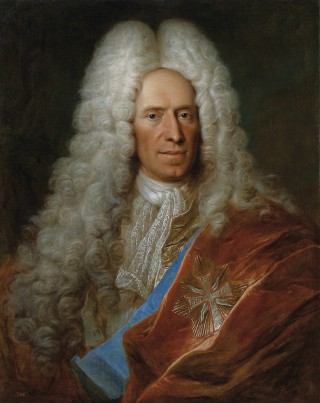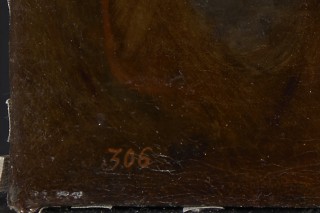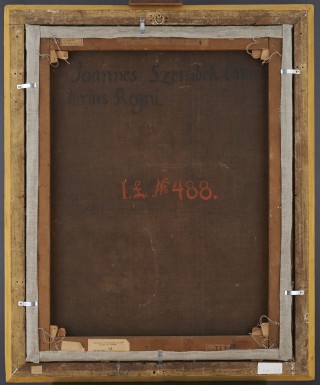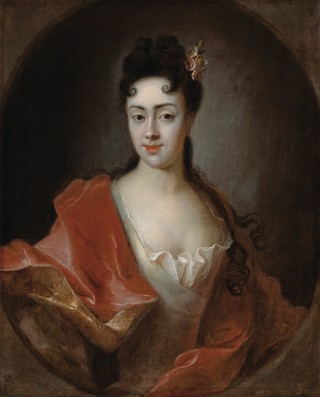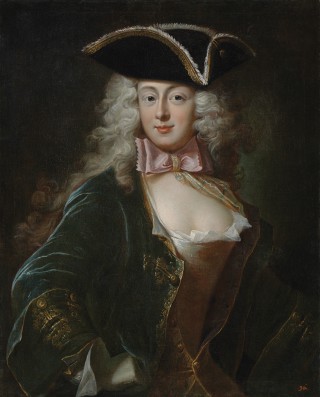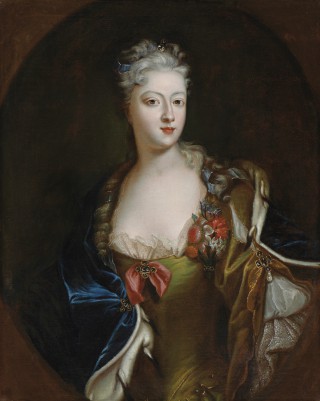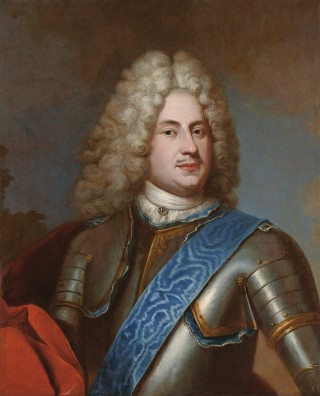Jan Sebastian Szembek
- Date
- after 1713
- Object type
- painting
- Technique
- oil
- Material
- canvas
- Dimensions
- 78,9 x 62,5 cm
- Acquisition date
- 1771
- Location
- The Palace on the Isle - Bacchus Room, ground floor
- Marks and inscriptions
- red number 306 of the Stanisław August collection, bottom left
- Place of Origin
- Warsaw (Poland, Mazowieckie)
- Owner
- The Royal Łazienki
- Museum number
- ŁKr 879
The portrait of Jan Szembek (c. 1672–1731) was traditionally believed to have been acquired by Stanisław August in 1764 from Kasper Lubomirski, together with the Ujazdów estate (for the group of portraits from Ujazdów, now in the Royal Łazienki see cat. no. 48). However, it is documented as having come into the possession of the king in another way: purchased in 1771 for 30 ducats from Christoph Joseph II Werner, an artist who was then working for the king in Warsaw (see archival sources, below; cf. Juszczak 2010, p. 145, footnote 61—mistakenly as payment for a copy painted by Werner).
In the catalogues of the Stanisław August collection the painting was recorded as a work by Mányoki and valued at 30 ducats. …
The portrait is of a high quality and, in our opinion, definitely an autograph by Mányoki, painted probably in 1712 or 1713. It was the high point of the career of Jan Sebastian Szembek, an ally and supporter of August II, who was loyal to him from his election as king of Poland in 1697 through the difficult years in which he lost the crown to Stanisław Leszczyński. In April 1712 Szembek, who from 1699 held the post of Crown Referendary, became Grand Chancellor of the Crown. There is no information regarding the exact date when he was awarded the Order of the White Eagle, with which he has been portrayed. It is certain that he had the Order in 1712, but he could have received it earlier … . The blue riband and the star of the Order on the red cloak are highlighted, the motto on the star Pro-Fide-Rege-Et-Lege is rendered with minute precision. The portrait is painted expressively, with spontaneous, free brushwork—well preserved particularly in the clothing. [See D. Juszczak, H. Małachowicz, The Stanisław August Collection of Paintings at the Royal Łazienki. Catalogue, Royal Łazienki Museum, Warsaw 2016, no. 67, pp. 259–260.]



